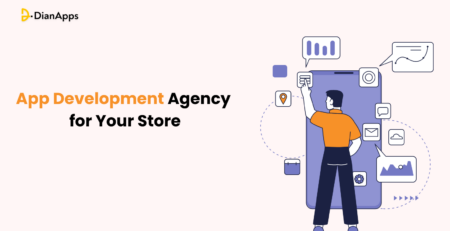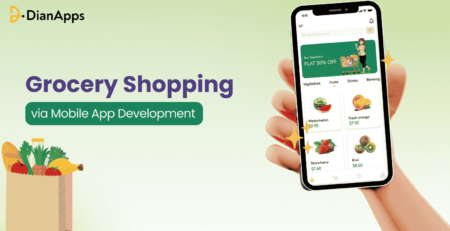Building Your Own App: From Concept to Launch
Every great app you use today once lived only in someone’s imagination.
Have an idea that feels too good to stay just an idea? But wondering, how do I turn it into reality? Building an app is not just about coding, it’s about vision, research, idea, patience, execution, and more.
Before you move on to build an app, remember:
- Great ideas alone don’t build great apps; action does.
- User needs should guide your every decision.
- Simplicity beats complexity, every time.
- Feedback is a chance to improve, not failure.
Feeling a mix of excitement and uncertainty? That’s the perfect time to start understanding how to build an app. Want to build an amazing app that is user-friendly and innovative? Ensure to take help from a mobile app development company.
In this blog, we’ll help you streamline your app development journey, from rough idea to successful launch, so you can turn your spark into something people can’t live without.
Want to build an app that becomes a necessity for people? Let’s get started!
Mobile App Market Statistics
Here are some of the key market statistics related to mobile app development:
- Global Revenue: Mobile apps generated over $935 billion in revenue in 2024, reflecting the industry’s massive scale and growth.
- App Store Availability: The Apple App Store hosts approximately 1.96 million apps, while the Google Play Store offers around 2.87 million apps, showcasing the vast selection available to users.
- User Engagement: Millennials are particularly active, with 21% opening an app more than 50 times per day, indicating high user engagement levels.
- Market Growth: The global mobile application market size was estimated at USD 289.17 billion in 2024 and is projected to reach over USD 1,103.48 billion by 2034, growing at a CAGR of 21.55% from 2025 to 2034.
- Consumer Spending: In 2024, 68.13% of all consumer spending on mobile applications went to iPhone users, while Android users accounted for 31.87%.
- App Usage: The average smartphone owner uses 10 apps per day and 30 apps each month, highlighting the frequent interaction users have with mobile applications.
- App Downloads: In 2023, there were 12.5 billion apps downloaded in the United States alone, underscoring the high demand and popularity of mobile applications.
- In-App Purchases: Revenue from in-app purchases reached $150 billion in 2024, marking a 12.5% increase year-over-year, indicating a growing trend in monetization strategies.
How to Create a Mobile App in Easy Steps On Your Own?
Today, every business from different industries, be it e-commerce, sports, e-learning, fintech, gaming, or any other, wants a mobile application. Continue reading to learn about the important steps required to build a successful mobile application:
Defining Your App Idea
Every successful app begins with a strong idea. But having an idea isn’t enough, you must define it clearly. On this stage, you must think about certain questions shown below:
- What problem does your app solve?
- Who exactly will use it?
- Why would they prefer your app over others?
Answering these questions gives your idea shape and purpose. A well-defined app concept acts as your guide through the entire development journey. It keeps you focused when the process gets overwhelming and helps others (like designers or investors) believe in your vision.
Researching Your Market and Audience
Even the best ideas fail without proper research. Start by identifying your ideal audience. While researching your idea, make sure to consider the questions given below:
- Who are they?
- What apps do they currently use?
- What frustrations do they have with existing options?
Get deep insights into competitor analysis, see what’s working and what’s missing. Use surveys, interviews, and online forums to gather real insights. AI can also be used for market research. This research phase helps you fine-tune your app idea and find your competitive edge. Remember: Building for a real need always beats building for guesses.
Planning the Features and Functionalities
It’s beneficial to add every feature into a mobile application it leads to the success of the app, but it’s not always possible to add all features into an app. Start by planning your Minimum Viable Product (MVP). List out all the possible features you dream of and then select which is required by your target market.
Now it’s time to prioritize: What’s absolutely necessary for launch? And what can wait? Features should be useful, simple, and aligned with your app’s core purpose. This focused planning saves time, reduces costs, and ensures a better user experience right from day one.
Choosing the Right Tech Stack
Your tech stack decides how your app runs and evolves. Choose wisely based on your goals, team skills, and target users. Will you build natively for iOS/Android? Or opt for cross-platform solutions like Flutter or React Native?
Also, think about backend technologies, databases, APIs, and scalability. Don’t just follow trends — select technologies that match your app’s specific needs. A strong foundation today avoids technical nightmares tomorrow.
Recommended Read: Native vs Hybrid vs Cross-Platform: Which is Best for Your Business?
Designing an Engaging User Experience (UX)
A sleek design is great, but a smooth experience is what truly wins users. Focus on intuitive navigation, clear call-to-actions, and minimalistic layouts.
Design from the user’s perspective: How can you make every tap and scroll feel effortless?
Use colors, fonts, and elements that support the flow, not distract from it. Prototype early and test designs with real users to catch issues fast. Great UX design turns first-time users into loyal fans.
Development: Bringing Your App to Life
Now comes the coding magic! Developers, turn your plans, wireframes, and specs into a living, breathing app.
Use agile development methods to stay flexible. Build in phases, review progress often, and make space for tweaks. Expect hurdles, bugs, design changes, and new ideas will pop up. Good communication between you, designers, and developers is key. Stay involved, stay curious, and celebrate small wins along the way.
Recommended Read: Top 7 backend technologies for mobile app development in 2025
Testing and Quality Assurance
Testing isn’t optional, it’s critical. Before launch, test everything thoroughly:
- Features
- Flows
- Speed
- Device compatibility
Catch bugs before users do! Do functional testing (does it work?) and UX testing (is it easy?). Use beta testers to get honest feedback. A polished app builds trust, while a buggy one loses users instantly.
Recommended Read: How To Get Accurate Software Testing Cost Estimation?
Preparing for Launch
The launch of your app is one of the most crucial phases in your journey. But it’s not just about releasing the app, it’s about strategic preparation.
Begin by finalizing your marketing plan. Develop compelling visuals, write a strong app store description, and select the right keywords to ensure visibility. Consider using social media, press releases, and email newsletters to build anticipation. Don’t forget your app’s backend: ensure your server infrastructure can handle traffic spikes and the app is bug-free.
Consider running a soft launch to gather real-world insights from a smaller audience. This approach helps identify bugs and refine your app before the full launch. With thorough preparation, your app has a higher chance of success in a competitive market.
Post-Launch: Gathering Feedback and Iterating
The launch is just the start; the real work begins post-launch. You need to gather constant feedback to improve your app.
First, track key performance metrics: user retention, session length, crash reports, and in-app behavior. Use app analytics tools and user surveys to learn what users like and where they face problems.
Engage with your audience, encourage reviews, and provide support. Carefully listen to suggestions and complaints from real users. From there, you can plan frequent updates. Release smaller, iterative updates to fix bugs and improve features.
Remember, an app that evolves based on user feedback not only retains users but grows a loyal community over time. Consistency in improving the app is key to long-term success.
Final Words
Building an app is a rewarding journey, but it requires more than just an idea and development skills. From defining your app idea to gathering post-launch feedback, each step is critical to creating a product that users love. Whether you’re designing the user experience or selecting the right tech stack, every decision should align with your goal of delivering value to your audience.
For businesses looking to make their mark, partnering with a trusted Android app development company can significantly streamline the process. Such companies bring expertise in turning your vision into a high-quality, scalable app. By following the structured process of development, testing, and iteration, you increase your chances of success in the competitive app market.
Remember, the key to a successful app doesn’t end at launch. Ongoing feedback, updates, and improvements will keep your app relevant, ensuring it continues to meet user needs and expectations over time.




